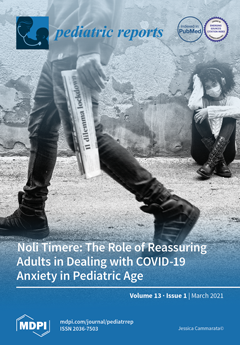The 14-3-3
η (eta) protein was evaluated as a biomarker in a cohort of patients with juvenile idiopathic arthritis (JIA), as well as disease- and healthy-controls, to determine its potential clinical utility. In this case-control study, levels of 14-3-3
η protein were evaluated
[...] Read more.
The 14-3-3
η (eta) protein was evaluated as a biomarker in a cohort of patients with juvenile idiopathic arthritis (JIA), as well as disease- and healthy-controls, to determine its potential clinical utility. In this case-control study, levels of 14-3-3
η protein were evaluated in archival specimens from patients with JIA, systemic lupus erythematosus (SLE), and rheumatoid arthritis (RA), as well as healthy pediatric controls. Just over 200 patients were evaluated, using specimens banked between 1990 and 2011. Comparisons were made to complete blood cell count (CBC), erythrocyte sedimentation rate (ESR), C-reactive protein (CRP), rheumatoid factor (RF), anti-cyclic citrullinated peptide (anti-CCP) antibodies, and anti-nuclear antibody (ANA) positivity. 14-3-3
η at levels 0.2 ng/mL or higher was considered positive. Fisher’s exact tests, odds ratios, 95% confidence intervals, and p-values were reported. 14-3-3
η positivity was seen in all included JIA subtypes. The rate of positivity was the highest in RF-positive (pos) polyarticular JIA. In the disease and healthy controls, lower rates of positivity were observed. The frequency of 14-3-3
η positivity among RF-positive and RF-negative (neg) polyarticular JIA patients, especially at values ≥0.5 ng/mL (associated with poor outcomes in adults), was also highest. Several JIA patients with 14-3-3
η positivity developed RF and anti-CCP positivity later in their disease. Significant levels of 14-3-3
η can be found in approximately 30% of RF-pos and RF-neg patients with polyarticular JIA. This protein may represent a new biomarker for polyarticular JIA, particularly RF-neg polyarticular JIA.
Full article






